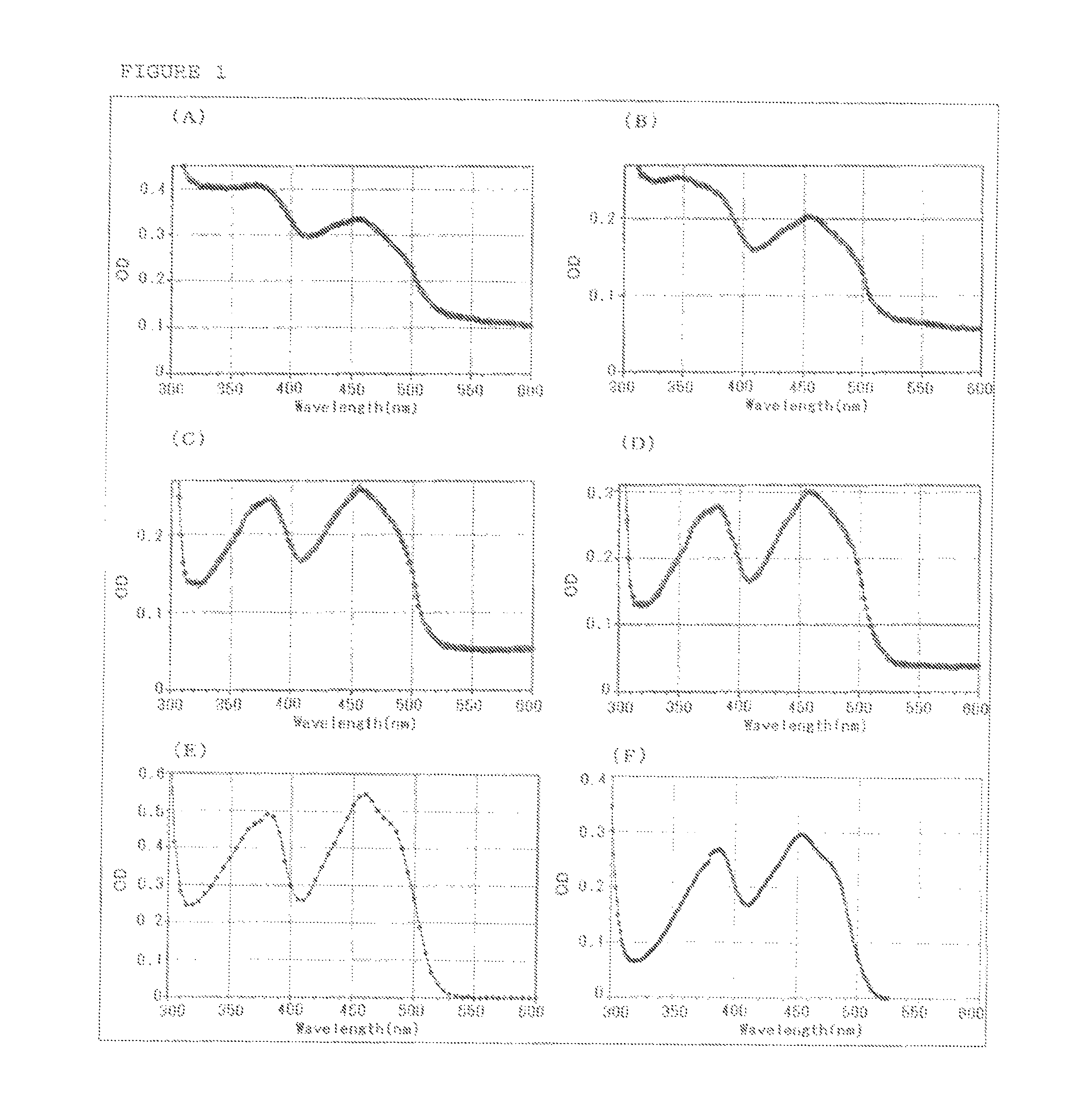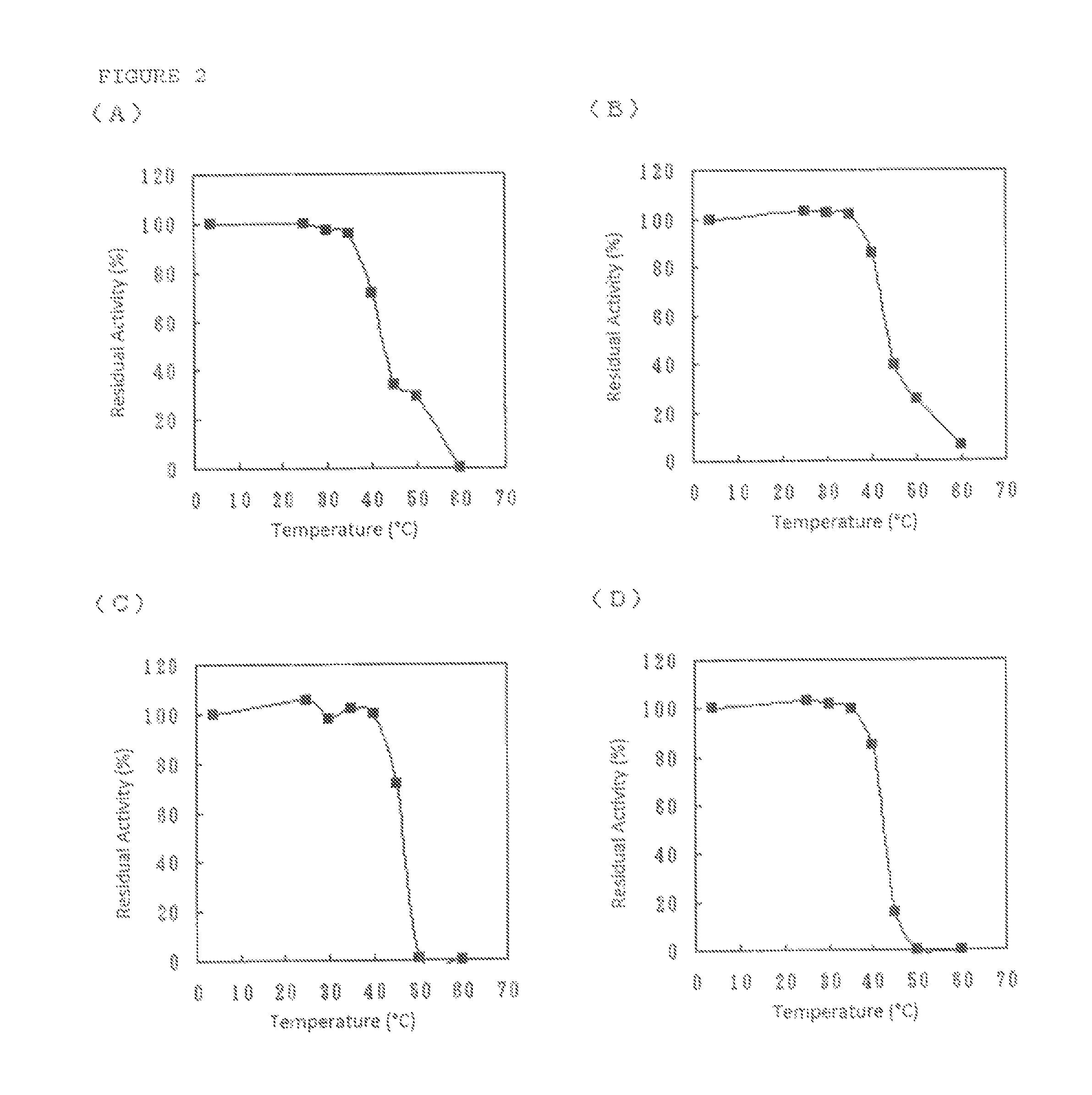Flavin-binding glucose dehydrogenase
a technology of glucose dehydrogenase and flavin, which is applied in the field of flavin-binding glucose dehydrogenase to achieve the effect of high reproducibility and high accuracy
- Summary
- Abstract
- Description
- Claims
- Application Information
AI Technical Summary
Benefits of technology
Problems solved by technology
Method used
Image
Examples
example 1
Preparation of the Flavin-Binding Glucose Dehydrogenase (GLD) of the Present Invention
[0180]The screening of GLD-producing microorganism was performed using a total of about 3,800 strains consisting of strains of microorganism isolated from the natural world and strains procured from Culture Collection (National Institute of Technology and Evaluation) and as a result, the inventors of the present invention confirmed GLD activity in culture filtrates of Dumontinia tuberosa NBRC30254, Ovulinia azaleae NBRC6610, Sclerotinia sclerotiorum NBRC9395, Sclerotinia sclerotiorum NBRC103652, Botrytis fabae NBRC5895, Botrytis fabae NBRC7171, Botrytis tulipae NBRC5896 and Ciborinia camelliae NBRC103663.
Purification of GLD Derived from Microorganisms of the Genus Dumontinia: Glucose Dehydrogenase (A)
[0181]0.05 L of a preculture medium (D-glucose 1.0%, soybean powder 2.0%, corn steep liquor 0.5%, magnesium sulfate heptahydrate 0.1%, pH 7.0) were added into a 0.2 L conical flask with baffles and the...
example 2
Purification of GLD Derived from Microorganisms of the Genus Ovulinia: Glucose Dehydrogenase (B)
[0184]0.05 L of a preculture medium (D-glucose 1.0%, soybean powder 2.0%, corn steep liquor 0.5%, magnesium sulfate heptahydrate 0.1%, pH 7.0) were added into a 0.2 L conical flask with baffles and the mixture was treated at 121° C. for 20 minutes for autoclave. The medium was inoculated with about 0.5 cm2 of Ovulinia azaleae NBRC6610 cultured in advance on a plate, for 2 minutes and then, subjected to rotational shaking culture performed at 25° C. at 100 rpm for 3 days. This medium was used as a seed medium and 3.5 L of the above medium put into a 5 L jar fermenter (five jar fermenters) and treated for autoclave was inoculated with 0.05 L of the seed culture, followed by culturing at 25° C., at 300 rpm and a rate of 1 v / v / m for 4 days. After the culturing was finished, 17.5 L of the cultured solution was filtered with a filter cloth to harvest the filtrate. Then, the obtained filtrate wa...
example 3
Purification of GLD Derived from Microorganisms of the Genus Sclerotinia: Glucose Dehydrogenase (C)
[0187]0.05 L of a preculture medium (D-glucose 1.0%, soybean powder 2.0%, corn steep liquor 0.5%, magnesium sulfate heptahydrate 0.1%, pH 7.0) were added into a 0.2 L conical flask with baffles and the mixture was treated at 121° C. for 20 minutes for autoclave. The medium was inoculated with about 0.5 cm2 of Sclerotinia sclerotiorum NBRC103652 cultured in advance on a plate, for 2 minutes and then, subjected to rotational shaking culture performed at 25° C. at 100 rpm for 3 days. This medium was used as a seed medium and 3 L of the above medium put into a 5 L jar fermenter (five jar fermenters) and treated for autoclave was inoculated with 0.05 L of the seed culture, followed by culturing at 25° C., at 400 rpm and a rate of 1 v / v / m for 6 days. After the culturing was finished, 15 L of the cultured solution was filtered with a filter cloth to harvest the filtrate. Then, the obtained fi...
PUM
| Property | Measurement | Unit |
|---|---|---|
| temperature | aaaaa | aaaaa |
| molecular weight | aaaaa | aaaaa |
| Temperature | aaaaa | aaaaa |
Abstract
Description
Claims
Application Information
 Login to View More
Login to View More - R&D
- Intellectual Property
- Life Sciences
- Materials
- Tech Scout
- Unparalleled Data Quality
- Higher Quality Content
- 60% Fewer Hallucinations
Browse by: Latest US Patents, China's latest patents, Technical Efficacy Thesaurus, Application Domain, Technology Topic, Popular Technical Reports.
© 2025 PatSnap. All rights reserved.Legal|Privacy policy|Modern Slavery Act Transparency Statement|Sitemap|About US| Contact US: help@patsnap.com



